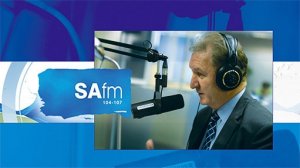Every Friday, SAfm’s radio anchor Sakina Kamwendo speaks to Martin Creamer, publishing editor of Engineering News & Mining Weekly. Reported here is this Friday’s At the Coalface transcript:
Kamwendo: This week’s great news is that copper mining has been revived in South Africa’s Northern Cape.
Creamer: The last time we got copper out of the Northern Cape was in 1983. Now, 40 years later, we find that there's so much to do there because mines were closed. So Newmont of the United States was mining there. Gold Fields of South Africa was mining there. But when the copper price went down, they closed these mines. Now Copper 360, which is listed on the Johannesburg Stock Exchange, moved in, and this week produced the first ore from the Rieberg mine – and they've got 11 other mines like this that they're going to open. So this is going to be fantastic for South Africa. The grade there is unsurpassed, and what they're saying is that maybe it isn't the biggest volume in the world, but it's the biggest value. They're talking about a 55% profit margin. Of course, they’re using existing infrastructure, so it helps them a lot. But it is a great thing for South Africa at a time when copper is very important, because the world is electrifying, and the demand for copper is going to soar. All the outlooks are that it's going to be so big, and now we can get going again in copper in the Northern Cape. And what they're saying is that they’re planning, not just to export the copper concentrate. They want to export beneficiated product. Now, that's a word that South Africans love, where you add value to the copper. They're talking about in three years looking at producing copper wire and copper pipe, so that would be fantastic, and they've also got a copper school going there, and the skills coming out of there are fantastic.
Kamwendo: The high gold price has resulted in the latest dividend payouts to shareholders soaring by more than 400%.
Creamer: you know, often when the gold price goes up, mining companies get a bit lax, and they don't go for productivity anymore, and they don't go for cutting costs. But AngloGold Ashanti is an exception. They have been moving in there trying to reduce costs, not looking at the price, and now you saw in their half year results, the dividend that they announced was 400% higher. The cash flow reversed from an outflow of $200-million to an inflow of $200-million, so it's so important that when you get into this mining space, you look at what you can control, never mind the price, and then when the price goes up, you have massive bonuses, as we're seeing from AngloGold Ashanti
Kamwendo: South Africa’s ferrochrome was highlighted this week as being a key alloy in the decarbonisation of the world.
Creamer: Yes, you know, we've never thought of ferrochrome as being a decarbonising metal, but Glencore, which produces it, spelt out this week that it is decarbonising because it is the ingredient in stainless steel, and stainless steel last so much longer than steel. So coal does not have to be burnt as regularly. So, it is seen now as a decarbonising steel, which is very important because South Africa is very close to ferrochrome. It goes into that stainless steel, not so much in South Africa, but in the world, and this is a big plus for it. A the same time, Glencore are putting up renewable energy into the system so that that will make it even greener. Once they producing the ferrochrome with the solar power and the wind power that they signing up, it will make it a green metal.
Martin Creamer is publishing editor of Engineering News & Mining Weekly and he’ll be back at the Coal-Face at the same time next Friday.
Edited by: Creamer Media Reporter
EMAIL THIS ARTICLE SAVE THIS ARTICLE
ARTICLE ENQUIRY
To subscribe email subscriptions@creamermedia.co.za or click here
To advertise email advertising@creamermedia.co.za or click here












